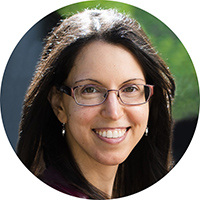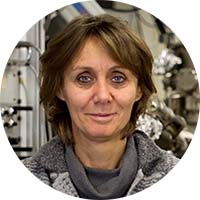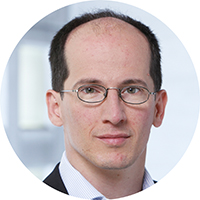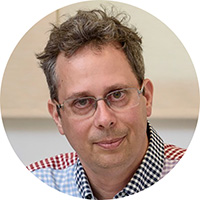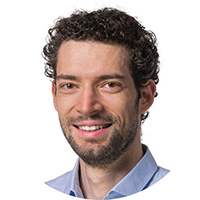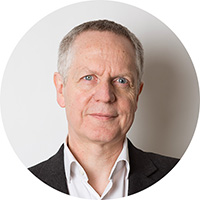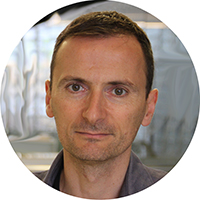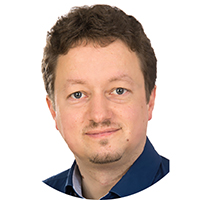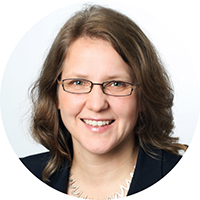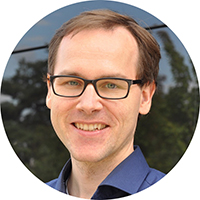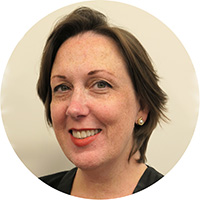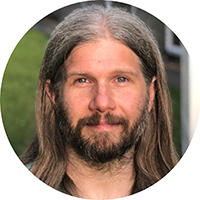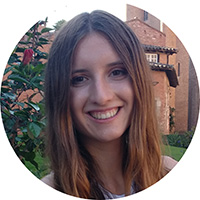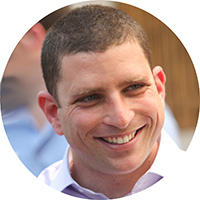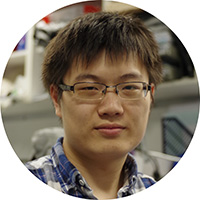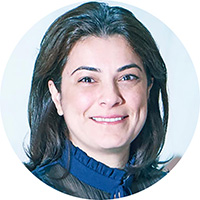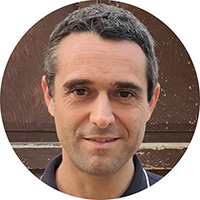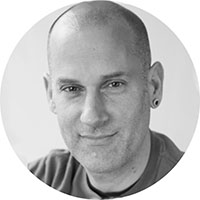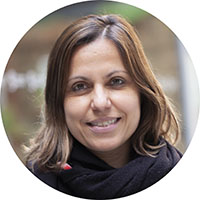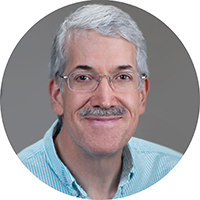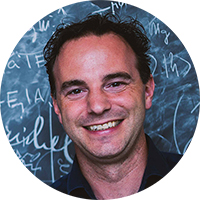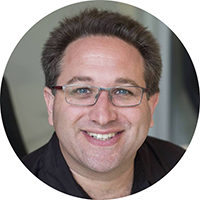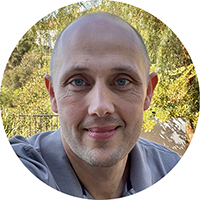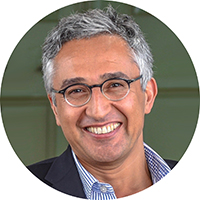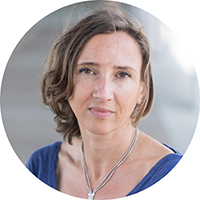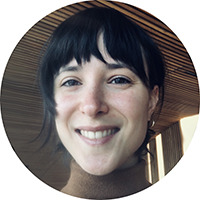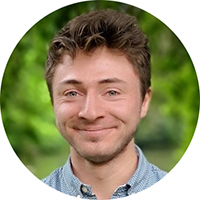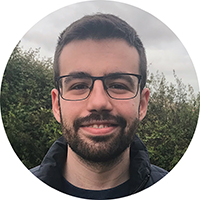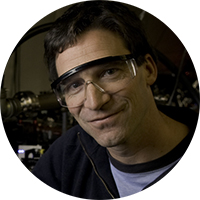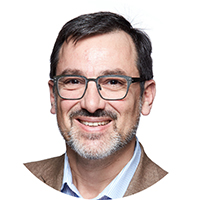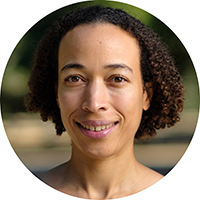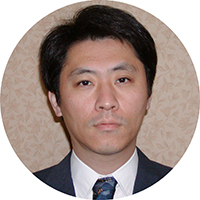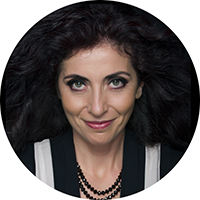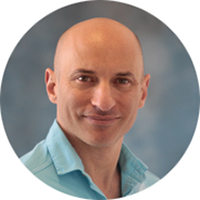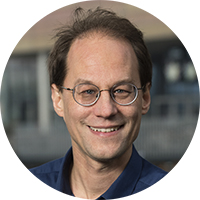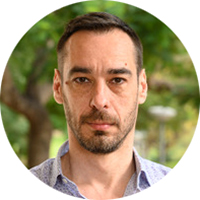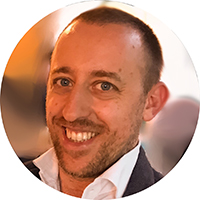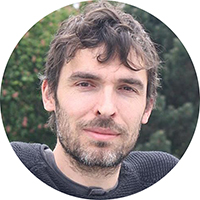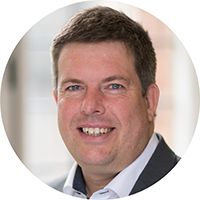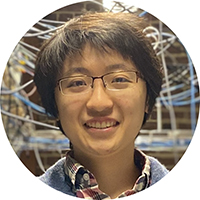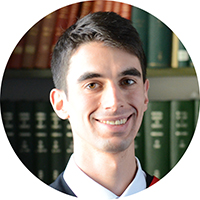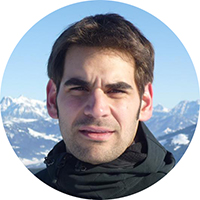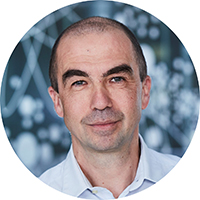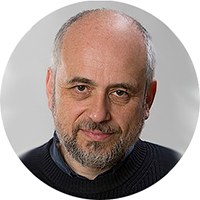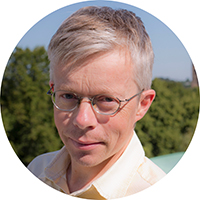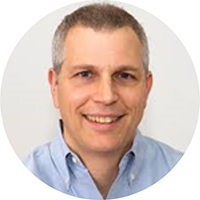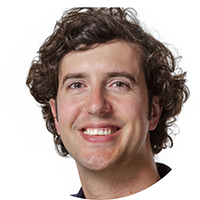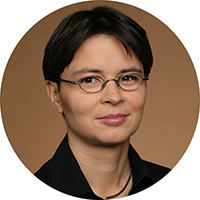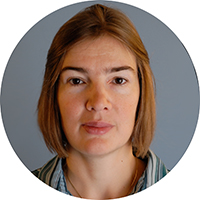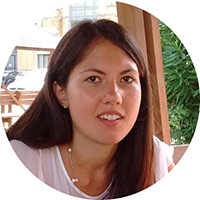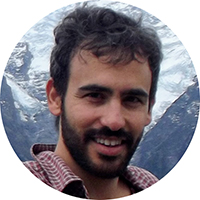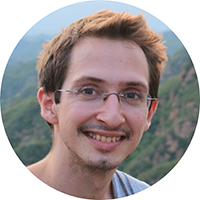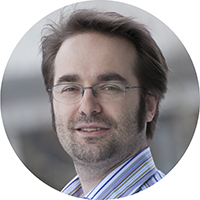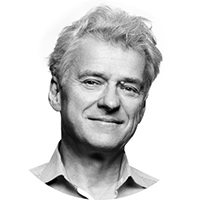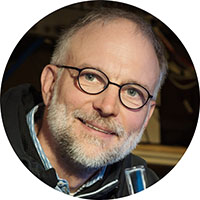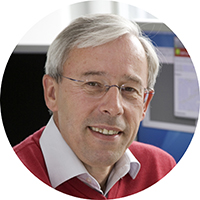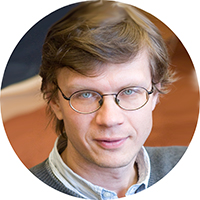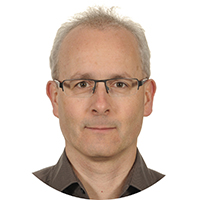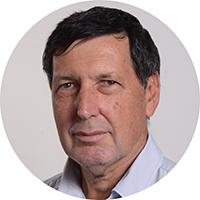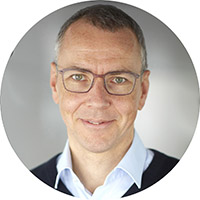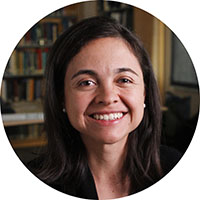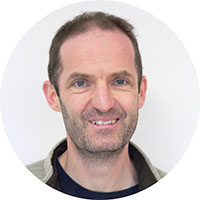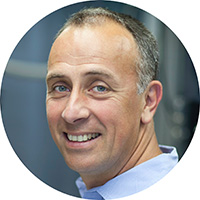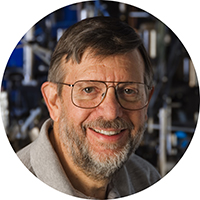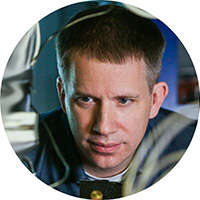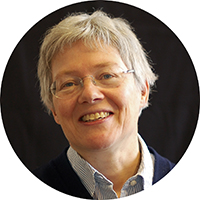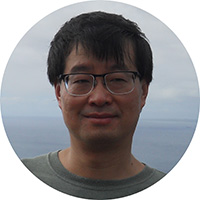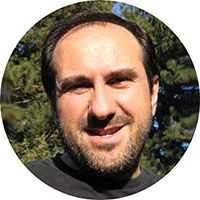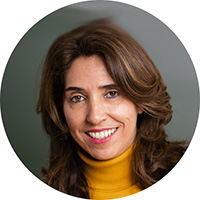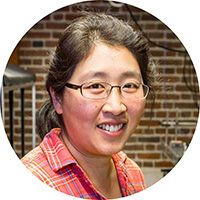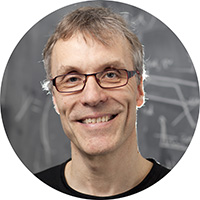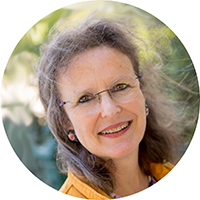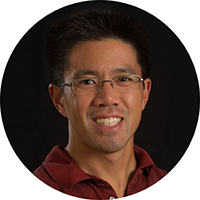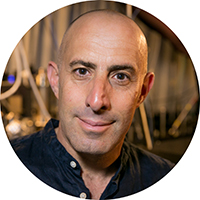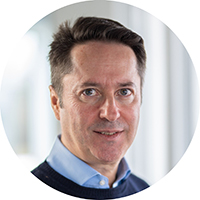Videos
The seminar starts Thursday at 17:00 CET or CEST (Central European Time or Central European Summer Time, depending on the time of year) and is live-streamed on our youtube channel.
Once the live stream has finished, we will make all video recordings and .pdf versions of the presentation slides available here.
Thu 2022-09-01 17:00 CEST
Quantum Science Seminar #68: Quantum Thermodynamics
NIST, JQI, U. Maryland
Gaithersburg — Maryland — USA
Gaithersburg — Maryland — USA
Quantum steampunk: Quantum information meets thermodynamics
Thermodynamics has shed light on engines, efficiency, and time’s
arrow since the Industrial Revolution. But the steam engines
that powered the Industrial Revolution were large and classical.
Much of today’s technology and experiments are small-scale,
quantum, far from equilibrium, and processing information.
Nineteenth-century thermodynamics needs re-envisioning for the
21st century. Guidance has come from the mathematical toolkit of
quantum information theory. Applying quantum information theory
to thermodynamics sheds light on fundamental questions (e.g.,
how does entanglement spread during quantum thermalization? How
can we distinguish quantum heat from quantum work?) and
practicalities (e.g., quantum engines and the thermodynamic
value of coherences). I will overview how quantum information
theory is being used to revolutionize thermodynamics in quantum
steampunk, named for the steampunk genre of literature, art, and
cinema that juxtaposes futuristic technologies with 19th-century
settings.
Thu 2022-07-14 17:00 CEST
Quantum Science Seminar #67: Magnetic Molecules
University of Florence
Florence — Italy
Florence — Italy
Magnetic molecules in quantum nanoscience
Implementation of advanced Quantum Technologies might benefit
from the remarkable quantum properties shown by molecular spin
systems based on the coordination bond. The versatility of the
molecular approach combined with rational design has recently
boosted the operativity temperature of molecules acting as bits
of memory, otherwise known as Single-Molecule Magnets, or the
coherence time of molecular spin qubits. The richness and
tunability of the spectrum of spin levels make them particularly
suitable for quantum error correction, while spin-spin
interaction can be tuned to realize quantum gates and quantum
simulators. Molecules can also be processed to be deposited on
surfaces, allowing the realization of hybrid nanostructures.
However, the molecular approach also poses key challenges,
requiring for instance to overcome limitations such as those
induced by low energy vibrational modes typical of molecular
lattices. This drawback can be in part overcome by chemical
design. Achieving the control of a single molecule is also
challenging, requiring to couple the electric field, which can
be confined at the molecular scale, with the spin degrees of
freedom of the molecule. Initialization of spin systems is also
an issue because only at very low temperatures does the Zeeman
interaction overcome the thermal energy. Learning from nature,
we are proposing to exploit chirality, and in particular spin
selectivity in electron transfer processes through chiral
structures, as an alternative way to spin polarize molecular
systems. An overview of our recent results will be provided.
References
-
Quantum dynamics of a single molecule magnet on superconducting Pb(111)Nature Materials195462020
-
Unveiling phonons in a molecular qubit with four-dimensional inelastic neutron scattering and density functional theoryNature Communications1117512020
-
The Second Quantum Revolution: Role and Challenges of Molecular ChemistryJournal of the American Chemical Society141113392019
Thu 2022-06-09 17:00 CEST
Quantum Science Seminar #66: Quantum Error Correction
ETH Zurich
Zurich — Switzerland
Zurich — Switzerland
Quantum Error Correction with Superconducting Circuits
Quantum computers hold the promise of solving computational
problems which are intractable using conventional methods. For
fault-tolerant operation quantum computers must correct errors
occurring due to unavoidable decoherence and limited control
accuracy. Here, we demonstrate quantum error correction using
the surface code, which is known for its exceptionally high
tolerance to errors. Using 17 physical qubits in a
superconducting circuit we encode quantum information in a
distance-three logical qubit building up on recent distance-two
error detection experiments. In an error correction cycle taking
only 1.1 µs, we demonstrate the preservation of four cardinal
states of the logical qubit. Repeatedly executing the cycle, we
measure and decode both bit- and phase-flip error syndromes
using a minimum-weight perfect-matching algorithm in an
error-model-free approach and apply corrections in
postprocessing. We find a low logical error probability of 3 %
per cycle when rejecting experimental runs in which leakage is
detected. The measured characteristics of our device agree well
with a numerical model. Our demonstration of repeated, fast, and
high-performance quantum error correction cycles, together with
recent advances in ion traps, support our understanding that
fault-tolerant quantum computation will be practically
realizable.
Thu 2022-05-05 17:00 CEST
Quantum Science Seminar #65: Cosmology
Weizmann Institute of Science
Rehovot — Israel
Rehovot — Israel
Casimir effect meets the cosmological constant
In 1998 astronomers discovered that the expansion of the
universe is accelerating. Somehow, something must have made
gravity repulsive on cosmological scales. This something was
called dark energy; it is described by Einstein’s cosmological
constant; and it amounts to about 70% of the total mass of the
universe. It has been conjectured that the cosmological constant
is a form of vacuum energy, but its prediction from quantum
field theory has failed by many orders of magnitude. The lecture
shows how a theory informed by empirical evidence on Casimir
forces does produce the correct order of magnitude and agrees
with astronomical data, and how subtle this is.
References
-
The case for a Casimir cosmologyPhilosophical Transactions of the Royal Society A378201902292020
-
Lifshitz cosmology: quantum vacuum and Hubble tensionMonthly Notices of the Royal Astronomical Society50734732021
-
Van der Waals anomaly: Analog of dark energy with ultracold atomsPhysical Review B1042354322021
Thu 2022-04-07 17:00 CEST
Quantum Science Seminar #64: Rydberg Atoms
IQOQI
Innsbruck — Austria
Innsbruck — Austria
From Quantum Many-Body Physics to Quantum Information with Rydberg Atom Arrays
Individually trapped neutral atoms provide a promising platform
to engineer quantum many-body systems in a controlled, bottom-up
approach. They can be readily manipulated in large numbers and
interact strongly when excited to Rydberg states. In this talk
I will give an overview over the physics of these Rydberg atom
arrays and discuss several phenomena that can be observed in
these systems, as well as applications for quantum information
processing. First, I will discuss many-body phenomena in and out
of equilibrium. In equilibrium, Rydberg atom arrays allow to
access quantum critical phenomena at transitions between
disordered and ordered phases that break various spatial
symmetries, and even topologically ordered states. Out of
equilibrium, novel quantum many-body phenomena, such as quantum
many-body scars can be observed in these systems. In the second
part of this talk, I will show how these phenomena connect to
quantum computation, specifically how quantum optimization
algorithms can be implemented in current experiments with
Rydberg atom arrays.
References
Thu 2022-03-03 17:00 CET
Quantum Science Seminar #63: Quantum Gases
Collège de France
Laboratoire Kastler Brossel — Paris — France
Laboratoire Kastler Brossel — Paris — France
Scale and conformal invariance for cold atomic gases
Scale invariance, a concept first introduced in high energy
physics, has found many applications in the physics of quantum
gases and fluids. It applies to Fermi gases in the unitary
regime, to two-dimensional Bose gases, at least within a
classical field description, and -- in a discrete version -- to
the Efimov effect. In this presentation, we will describe some
illustrations of this scale invariance, starting with stationary
situations such as the derivation of an equation of state or the
existence of solitons. We will then move on to time-dependent
problems, for which scale invariance can be incorporated in a
more general symmetry, conformal invariance. We will show how
the "breathing mode", an emblematic consequence of
this symmetry, appears and we will finally discuss the existence
of breathers, specific structures with periodic time evolution,
which are also consequences of conformal invariance.
Thu 2022-02-03 17:00 CET
Quantum Science Seminar #62: Quantum Information
ICFO
Barcelona — Spain
Barcelona — Spain
Network quantum information processing
Small quantum networks consisting of several nodes sharing
entangled states are within reach with current and near-term
technologies. They offer new possibilities for quantum
information processing beyond what achievable in standard
point-to-point configurations. In this talk, quantum networks
are considered in the device-independent scenario where devices
are seen as quantum back boxes processing classical information.
We first show how the characterization of correlations in
quantum networks is related to the study of causal networks. We
then present several results illustrating the possibilities
these networks offer in the foundations of quantum physics or
for the development of quantum information technologies. In the
first case, we show how real quantum theory can be falsified in
a small network consisting of three observers in an entanglement
swapping configuration. In the second, we discuss a proposal for
the implementation long-distance device-independent quantum key
distribution.
Thu 2022-01-13 17:00 CET
Quantum Science Seminar #61: Quantum Optics
TU Wien
Vienna — Austria
Vienna — Austria
Non-perturbative (cavity) QED
The structure of atoms, molecules and solids is mainly
determined by static Coulomb forces, while the coupling to the
quantized degrees of freedom of the electromagnetic field plays
only a secondary role. Recently, it has been speculated that
this general rule can be overcome in the context of cavity
quantum electrodynamics (QED), where the coupling of dipoles to
a single field mode can exceed the bare energy of the photon
itself. Under these conditions, light-matter interactions become
non-perturbative, as characterized by an effective finestructure
constant of order unity. In this seminar I will give a basic
introduction to this extreme coupling regime of cavity QED and
explain how vacuum-induced many-body effects can lead to novel
ground state phases in QED, which are the opposite of what has
been assumed so far. Beyond a purely fundamental interest, these
general mechanisms can be important for potential applications,
ranging from cavity-assisted chemistry to quantum technologies
based on ultrastrongly coupled circuit QED systems.
Thu 2021-12-02 17:00 CET
Quantum Science Seminar #60: Quantum Photonics
U. Paderborn
Paderborn — Germany
Paderborn — Germany
Quantum photonics using non-linear integrated optics and pulsed light
Quantum technologies promise a change of paradigm for many
fields of application, for example in communication systems, in
high-performance computing and simulation of quantum systems, as
well as in sensor technology. They can shift the boundaries of
today’s systems and devices beyond classical limits and
seemingly fundamental limitations. The use of complex photonic
systems, which comprise multiple optical modes as well as
nonclassical light, has been proposed for various quantum
applications over the last decades and illustrate the
versatility of photonic systems. However, their implementation
often requires advanced setups of high complexity, which poses
considerable challenges on the experimental side. Here we
present three differing approaches to advance current
experimental approaches for multi-dimensional photonic quantum
systems: non-linear integrated quantum optics, pulsed temporal
modes and time-multiplexing. Non-linear integrated quantum
devices with multiple channels enable the combinations of
different functionalities, such as sources and fast electro-
optic modulations, on a single compact monolithic structure.
Pulsed photon temporal modes are defined as field orthogonal
superposition states and can constitute a high dimensional
quantum system. They occupy only a single spatial mode and thus
they can be efficiently used in single-mode fibre communication
networks. Finally, time-multiplexed quantum walks are a
versatile tool for the implementation of a highly flexible
simulation platform with many modes and dynamic control of the
underlying graph structures and coherence properties of the
quantum network.
References
-
Nonlinear integrated quantum electro-optic circuitsScience Advances514512019
-
Photon Temporal Modes: A Complete Framework for Quantum Information SciencePhysical Review X50410172015
-
Decoherence and Disorder in Quantum Walks: From Ballistic Spread to LocalizationPhysical Review Letters1061804032011
Thu 2021-11-04 17:00 CET
Quantum Science Seminar #59: Machine Learning
Max-Planck-Institute for the Science of Light
Erlangen — Germany
Erlangen — Germany
Classical Machine Learning for Quantum Technologies
In this talk, I will give an overview of current efforts to
employ classical machine learning for quantum technologies.
Recent years have seen machine learning techniques like deep
neural networks revolutionize many fields of science and
technology. Since about 2016, they are being applied
increasingly with success to challenges for quantum
technologies. Examples include the use of neural networks for
interpreting measurement results, generation of novel
experimental setups, and deep reinforcement learning for
discovering strategies in quantum control and feedback or for
optimizing quantum circuits.
References
Thu 2021-10-07 17:00 CEST
Quantum Science Seminar #58: Gravitational Waves
University of Glasgow
Glasgow — United Kingdom
Glasgow — United Kingdom
Gravitational wave observatories: km-scale 'quantum sensors'
In September 2015 the twin `Advanced LIGO' observatories
enabled the first direct detection of gravitational waves from
astrophysical sources. The waves detected originated from the
collision and merger of two black holes 1.3 billion light years
from earth. This detection marked the start of new field of
gravitational astrophysics, in the 100th anniversary year of
Einstein's General Theory of Relativity. The observatories
operate by using laser interferometry to search for the tiny
changes in the relative positions of the suspended optics in a
Michelson-type interferometer, induced by the passage of
gravitational waves. This talk will describe the technologies
developed to reach the threshold of first detection and outline
the research directions being pursued to increase the operating
sensitivity of the detectors - where quantum effects form an
important noise source in the instruments.
References
Thu 2021-07-22 17:00 CEST
Quantum Science Seminar #57: Quantum Dots
University of Cambridge
Cambridge — United Kingdom
Cambridge — United Kingdom
Nuclear spins in a semiconductor quantum dot: through the looking-glass, and what we found there
Optically active spins in solids are often considered prime
candidates for scalable and feasible quantum-optical devices.
Numerous material platforms including diamond, semiconductors,
and atomically thin 2d materials are investigated, where each
platform brings their own advantages along with their
challenges. Semiconductor quantum dots are the current
state-of-the-art for optical properties such as tuneability,
brightness and indistinguishability. Their nickname
"artificial atom" was coined historically to highlight
how similar they can be to isolated single atoms, but in fact
they are far from the realisation of a simple two-level system.
The inherently mesoscopic nature of a quantum dot leads to a
multitude of dynamics between spins, charges, vibrations, and
light. In particular, it offers a unique realisation of a
tripartite interface between light, a single proxy qubit
(electron spin) and an isolated spin ensemble (nuclei). Ability
to control these constituents and their mutual interactions
creates opportunities to realise an optically controllable
ensemble of ~50,000 spins. In this talk, I will present the
two-decade journey from treating the quantum dot nuclei as noise
to the observation of their collective magnon modes and
eventually to their tuneable quantum correlations, all witnessed
via a single electron spin driven by light.
Thu 2021-07-15 17:00 CEST
Quantum Science Seminar #56: Hot Topics
IFF-CSIC
Madrid — Spain
Madrid — Spain
Variational quantum algorithm for eigenvalue problems of a class of Schrödinger-type partial differential equations
We develop a variational quantum algorithm to solve partial
differential equations (PDE's) using a space-efficient
variational ansatz that merges structured quantum circuits for
coarse-graining with Fourier-based interpolation. Variational
circuits represent symmetrical smooth functions as the ansatz,
and we combine them with different classical optimizers that
differ on the gradient calculation: no gradient, numerical
gradient and analytic gradient. As benchmark, we show the
results for the computation of the ground state of the
one-dimensional quantum harmonic oscillator. In idealized
quantum computers, the infidelity is of order 10^{−5} with 3
qubits, and these fidelities can be approached in real noisy
quantum computers, either directly or through error mitigation
techniques. However, we find that the precision is sub-par with
other classical methods, suggesting the need for better
strategies in the optimization and the evaluation of the cost
function itself.
Yale University
New Haven — Connecticut — U.S.A.
New Haven — Connecticut — U.S.A.
Precision searches for new physics using optically levitated sensors
In an attempt to provide further insight into one of the major
questions of physics beyond the standard model, highly sensitive
optomechanical sensors are developed utilizing techniques from
the field of atomic physics. These sensors are table-top
experimental tools offering exquisite control of mechanical,
rotational and electrical degrees of freedom of an optically
levitated ~ng mass in vacuum, enabling unprecedented
acceleration and force sensitivities for these mass scales. I
will present two recent searches, the first looking for recoils
from passing DM particles and the second for deviations from
charge neutrality and so-called "millicharged
particles". For certain, well-motivated dark matter models,
these searches exceed the sensitivity of even large-scale
experiments, thereby offering a complementary approach.
MIT
Cambridge — Massachussetts — U.S.A
Cambridge — Massachussetts — U.S.A
Quantum-Enhanced Optical Lattice Clock
Optical atomic clocks which are primarily limited by the quantum
projection noise can reach stability of 10^{-19} in about one
hour. By Hamiltonian engineering, optical clocks with quantum
entangled states can reach better stability in a shorter time,
thus opening the possibility to survey physics at higher
frequency range. I will report the progress of our effort on
quantum-enhanced optical lattice clocks. With cavity feedback
squeezing and coherent optical state transfer, we demonstrate
entanglement on optical clock transition in Yb-171. We achieve a
metrological improvement of 4.4 dB over the standard quantum
limit (SQL). Recently, we performed a signal amplification
through time-reversed interaction (SATIN) protocol achieving the
largest sensitivity improvement beyond SQL in any interferometer
to date at 11.8(5) dB between the ground state magnetic
sublevels. Together with the future effort in improving the
local oscillator laser stability, we are one step closer to the
fully operational quantum-enhanced optical atomic clock.
Thu 2021-07-08 17:00 CEST
Quantum Science Seminar #55: Quantum Computing
University of Edinburgh & Sorbonne Université
Edinburg & Paris — Scotland & France
Edinburg & Paris — Scotland & France
Verification of Quantum Computation
Quantum computers promise to efficiently solve not only problems
believed to be intractable for classical computers, but also
problems for which verifying the solution is also considered
intractable. This raises the question of how one can check
whether quantum computers are indeed producing correct results.
This task, known as quantum verification, has been highlighted
as a significant challenge on the road to scalable quantum
computing technology. We review the most significant approaches
to quantum verification and comparethem in terms of structure,
complexity and required resources. We also comment on the use
of cryptographic techniques which, for many of the presented
protocols, has proven extremely useful in performing
verification. Finally, we discuss issues related to fault
tolerance, experimental implementations and the outlook for
future protocols.
References
-
Verification of Quantum Computation: An Overview of Existing ApproachesTheory of Computing Systems637152019
-
Quantum certification and benchmarkingNature Reviews Physics23822020
-
Verifying quantum computations at scale: A cryptographic leash on quantum devicesBulletin of the American Mathematical Society57392020
Thu 2021-07-01 17:00 CEST
Quantum Science Seminar #54: Atom Interferometry
LENS
Florence — Italy
Florence — Italy
Atom interferometry with ultra-cold alkaline-earth atoms for precision test of fundamental physics.
Today, matter-wave interferometers as clocks and gravimeters
allow for precision measurements of time and gravity at
unprecedented level. In all these sensors, the exquisite control
of both internal (electronic) and external (center of mass
motion) degrees of freedom of ultra-cold atomic samples, enable
us to study interactions at their most basic, quantum level,
paving the way for new tests of fundamental physics. For all
these applications, novel interferometric schemes based on
narrow intercombination transitions of alkali-earth
(alkali-earth like) atoms, has recently gained attention. In
this talk, I'll review some of the most recent results
obtained by our group with strontium and cadmium atoms.
Furthermore, novel spin-squeezing techniques with direct
application to narrow transitions will also be discussed.
References
-
Optical Atomic ClocksLa Rivista del Nuovo Cimento365552013
-
Atom Interferometry with the Sr Optical Clock TransitionPhysical Review Letters1192636012017
-
Bragg gravity-gradiometer using the 1S0–3P1 intercombination transition of 88SrNew Journal of Physics200430022018
-
Sr atom interferometry with the optical clock transition as a gravimeter and a gravity gradiometerClassical and Quantum Gravity370140012019
Thu 2021-06-24 17:00 CEST
Quantum Science Seminar #53: Quantum Computing
Quantum Solutions Lab
Amazon Web Services
Amazon Web Services
Quantum computing in industry
Quantum computing promises to solve seemingly intractable
problems. In the medium term, both optimization and chemistry
will likely be the only impactful applications for this novel
technology. In this talk, an overview of quantum computing in
industry with a focus on optimization is presented. It is argued
that quantum optimization machines are still superseded by
classical approaches on CMOS for the foreseeable future.
However, problem modeling as well as physics-inspired algorithms
present new, potentially transformative ways to solve hard
combinatorial optimization problem across industries. This is
illustrated with a new hybrid algorithm for combinatorial
optimization problems.
References
-
Perspectives of quantum annealing: Methods and implementationsReports on Progress in Physics830544012020
-
Physics-Inspired Optimization for Quadratic Unconstrained Problems Using a Digital AnnealerFrontiers in Physics7482019
-
Readiness of Quantum Optimization Machines for Industrial ApplicationsPhysical Review Applied120140042019
Thu 2021-06-17 17:00 CEST
Quantum Science Seminar #52: Quantum Communication
Sorbonne Université
CNRS — Paris — France
CNRS — Paris — France
Secure communications in quantum networks
Quantum technologies have the potential to improve in an
unprecedented way the security and efficiency of communications
in network infrastructures. We discuss the current landscape in
quantum communication and cryptography, and focus in particular
on recent photonic implementations, using encoding in discrete
or continuous properties of light, of central quantum network
protocols, enabling secret key distribution, verification of
multiparty entanglement and transactions of quantum money, with
security guarantees impossible to achieve with only classical
resources. We also describe current challenges in this field and
our efforts towards the miniaturization of the developed
photonic systems, their integration into telecommunication
network infrastructures, including with satellite links, as well
as the practical demonstration of novel protocols featuring a
quantum advantage for a wide range of tasks. These advances
enrich the resources and applications of the emerging quantum
networks that will play a central role in the context of future
global-scale quantum-safe communications.
Thu 2021-06-10 17:00 CEST
Quantum Science Seminar #51: Cold Molecules
Harvard University
Cambridge — Massachusetts — U.S.A.
Cambridge — Massachusetts — U.S.A.
Laser Cooling of Polyatomic Molecules
The tremendous scientific opportunities presented by ultracold
molecules have driven rapid progress in both the assembly of
diatomic molecules from ultracold atoms and the direct cooling
of diatomic and polyatomic molecules. Diatomic species have been
magneto-optically trapped and sub-Doppler cooled and their
collisions have been studied in several experimental systems,
including magnetic traps and merged optical tweezers. The
pioneering work that led advances in direct cooling began with
Stark deceleration, buffer-gas cooling and loading of traps,
buffer-gas beam sources, mechanical slowing, and a variety of
electromagnetic trapping and cooling mechanisms. As the field of
cold and ultracold molecules has grown, polyatomic molecules
have attracted new focus as potential novel quantum resources
that have distinct advantages (and challenges) compared to both
atoms and diatomic molecules. For example, all polyatomic
molecules have long-lived states arising from nuclear motion
with angular momentum about the internuclear axis. These states
exhibit linear, Debye-level Stark shifts at very low applied
electric fields and offer distinct Stark-shifted level
structures that are absent in laser-coolable diatomic molecules.
These and other features in polyatomic molecules can be applied
to quantum simulation, fundamental symmetry tests, searches for
dark matter, and particle physics beyond the Standard Model,
potentially at the 1 PeV scale. Generic classes of polyatomic
molecules have been identified as amenable to laser cooling into
the ultracold (~1 μK) regime. One class is that of metal oxide
radicals (MOR), which includes linear, symmetric top, and
asymmetric top species. In this talk I will discuss some of the
past experiments that brought us to this point, and the
challenges and scientific opportunities with the laser cooling
of polyatomic molecules. Results on SrOH, YbOH, CaOH and CaOCH3
will be discussed, as well as preliminary work on more complex
species.
Thu 2021-05-27 17:00 CEST
Quantum Science Seminar #50: Optomechanics
University of Vienna
Vienna — Austria
Vienna — Austria
Quantum optomechanics with levitated solids: a new perspective for the gravity-quantum interface
The quantum optical control of solid-state mechanical devices,
quantum optomechanics, has emerged as a new frontier of
light-matter interactions. Objects currently under investigation
cover a mass range of more than 17 orders of magnitude - from
nanomechanical waveguides to macroscopic, kilogram-weight
mirrors of gravitational wave detectors. Extending this approach
to levitated solids opens up complete new ways of coherently
controlling the motion of massive quantum objects in
engineerable potential landscapes. I will discuss recent
experimental advances in quantum controlling levitated solids,
including demonstrations of the motional quantum ground state of
optically trapped nanoparticles in a room temperature
environment. I will also discuss the perspective for such
experiments to create superpositions of gravitational source
masses. This addresses directly one of the outstanding questions
at the interface between quantum physics and gravity, namely
“what is the gravitational field generated by a quantum
object?”.
Thu 2021-05-20 17:00 CEST
Quantum Science Seminar #49: Quantum Computing
University of Texas at Austin
Austin — Texas — U.S.A.
Austin — Texas — U.S.A.
Quantum Computational Supremacy
In Fall 2019, a team at Google made the first-ever claim of
"quantum computational supremacy"---that is, a clear
quantum speedup over a classical computer for some task---using
a 53-qubit programmable superconducting chip called Sycamore.
In Fall 2020, a group at USTC in China made a claim of quantum
supremacy, using "BosonSampling" (a proposal by me and
Alex Arkhipov in 2011) with 50-70 photons in an optical network.
In addition to engineering, these accomplishments built on a
decade of research in quantum complexity theory. This talk will
discuss questions like: what exactly were the contrived
computational problems that were solved? How does one verify the
outputs using a classical computer? And how sure are we that
the problems are indeed classically hard? I'll end with a
proposed application for these sampling based quantum supremacy
experiments that I've been working on: namely, the
generation of certified random bits, for use (for example) in
proof of-stake cryptocurrencies.
Thu 2021-05-13 17:00 CEST
Quantum Science Seminar #48: Nuclear Clock
UCLA
Los Angeles — California — U.S.A.
Los Angeles — California — U.S.A.
Laser spectroscopy of a nucleus
In 1976 Kroger and Reich established the existence of a
low-lying, nuclear excited state in Th-229 that appeared to be
accessible with laser technology. This discovery touched off a
flurry of activity to perform laser spectroscopy of a nucleus,
as a laser-accessible nuclear transition would provide a host of
new technological and scientific applications. Despite this
significant activity, to date, no one has succeeded in actually
performing laser spectroscopy on the nucleus. I will discuss our
efforts to do exactly this.
References
-
Constraining the Evolution of the Fundamental Constants with a Solid-State Optical Frequency Reference Based on the 229-Th NucleusPhysical Review Letters1042008022010
-
Results of a Direct Search Using Synchrotron Radiation for the Low-Energy 229-Th Nuclear Isomeric TransitionPhysical Review Letters1142530012015
-
The concept of laser-based conversion electron Mössbauer spectroscopy for a precise energy determination of 229m-ThHyperfine Interactions240232019
Thu 2021-05-06 17:00 CEST
Quantum Science Seminar #47: Quantum Optics
Max-Planck-Institute for the Science of Light
Erlangen — Germany
Erlangen — Germany
Molecular Quantum Optics
Light-matter interaction at the nanometer scale lies at the
heart of elementary optical processes such as absorption,
emission or scattering. Over the past two decades, we have
realized a series of experiments to investigate the interaction
of single photons, single molecules and single nanoparticles. In
this presentation, I discuss recent studies, where we reach
unity efficiency in the coupling of single photons to single
molecules and describe our efforts to exploit this for the
realization of polaritonic states involving a controlled number
of molecules and photons. Furthermore, I report on efforts to
exploit the phononic degrees of freedom of molecules and their
environment as a quantum resource.
References
-
Nanometer Resolution and Coherent Optical Dipole Coupling of Two Individual MoleculesScience2983852002
-
Efficient coupling of photons to a single molecule and the observation of its resonance fluorescenceNature Physics4602008
-
Turning a molecule into a coherent two-level quantum systemNature Physics154832019
Thu 2021-04-29 17:00 CEST
Quantum Science Seminar #46: Quantum Thermodynamics
CNRS & Université Grenoble Alpes
France
France
A short story of quantum thermodynamics
This Seminar is a fast journey through the build-up of quantum
thermodynamics, an emerging field at the crossroad between
quantum information, quantum open systems and stochastic
thermodynamics. Born at the time of industrial revolution to
optimize the exploitation of thermal resources, the concepts of
thermodynamics have been adapted to small systems where thermal
fluctuations are predominant. Extending the framework to quantum
fluctuations is a great challenge of quantum thermodynamics,
that opens exciting research lines e.g. measurement fueled
engines or thermodynamics of driven-dissipative systems. On a
more applied side, it provides the tools to optimize the
energetic consumption of future quantum computers.
Thu 2021-04-22 17:00 CEST
Quantum Science Seminar #45: Hot Topics
LENS
Florence — Italy
Florence — Italy
All optical frequency tuning of integrated single-molecule emitters
We address the challenge of bringing solid-state quantum
emitters all to the same resonant frequency within one chip. The
study of cooperative effects, and the possibility to scale up
quantum photonic technologies depend on such ability. Here, we
demonstrate optical frequency tuning of individual,
lifetime-limited molecules by few hundred times their natural
linewidth. The effect persists even after the pump laser is
switched off, and is attributed to a local Stark shift
associated with optically induced long-lived charge-separated
states. The experimental observation is applied to independently
tune five close-by molecules into resonance within twice their
line-width.
Laboratoire Kastler Brossel
Paris — France
Paris — France
Hybrid entanglement in heterogeneous quantum networks
The building of quantum networks is stimulating the development
of multiple physical platforms and different types of encodings
in a heterogeneous structure allowing full functionality.
Central to this endeavour is the capability to distribute and
interconnect optical entangled states relying on different
discrete and continuous quantum variables. Here, we report an
entanglement swapping protocol involving single-photon
entanglement and hybrid entanglement between particle- and
wave-like optical qubits and demonstrate the creation of hybrid
entanglement heralded by a specific Bell-state measurement. This
ability opens up the prospect of connecting heterogeneous nodes
of a network, with the promise of increased integration and
functionalities.
ICFO
Barcelona — Spain
Barcelona — Spain
Quantum nonlinear optics based on 2D Rydberg atom arrays
In this project, we explore the combination of sub-wavelength,
two-dimensional atomic arrays, and Rydberg interactions as a
powerful platform to realize strong, coherent interactions
between individual photons with high fidelity. In particular,
the spatial ordering of the atoms guarantees efficient
atom-light interactions without the possibility of scattering
light into unwanted directions, for example, allowing the array
to act as a perfect mirror for individual photons. In turn,
Rydberg interactions enable single photons to alter the optical
response of the array within a potentially large blockade radius
R_b, which can effectively punch a large "hole" for
subsequent photons. We show that such a system enables a
coherent photon-photon gate or switch, with an error scaling
that is significantly better than the best-known scaling in a
disordered ensemble.
Thu 2021-04-15 17:00 CEST
Quantum Science Seminar #44: Quantum Computing
National Institute of Standards and Technology
Boulder — Colorado — U.S.A.
Boulder — Colorado — U.S.A.
Quantum Logic Control of a Single Molecular Ion
An amazing level of quantum control is routinely reached in
modern experiments with atoms, but similar control over
molecules has been an elusive goal. A method based on quantum
logic spectroscopy [1] can address this challenge for a wide
class of molecular ions [2,3]. We have now realized the basic
elements of this proposal. In our demonstration, we trap a
calcium ion together with a calcium hydride ion (CaH+) that is a
convenient stand-in for more general molecular ions. We
laser-cool the two-ion crystal to its motional ground state and
then drive Raman-transitions in the molecular ion, where a
transition in the molecule also deposits a single quantum of
excitation in the motion of the ion pair (motional
"sidebands"). We can efficiently detect this single
quantum of excitation with the calcium ion, which projects the
molecule into the final state of the sideband transition, a
known, pure quantum state. The molecule can be coherently
manipulated after the projection, and its resulting state read
out by another quantum logic state detection. We demonstrate
this by driving Rabi oscillations between different rotational
states [4, 5] and by entangling the molecular ion with the logic
ion [6]. All transitions in the molecule are either driven by a
single, far off-resonant continuous-wave laser or by a
far-off-resonant frequency comb. This makes the approach
suitable for quantum control and precision measurement of a
large class of molecular ions.
References
-
Spectroscopy using quantum logicScience3097492005
-
Quantum logic for the control and manipulation of molecular ions using a frequency combNew Journal of Physics140230282012
-
Quantum state preparation and control of single molecular ionsNew Journal of Physics140230292012
-
Preparation and coherent manipulation of pure quantum states of a single molecular ionNature5452032017
-
Frequency-comb spectroscopy on pure quantum states of a single molecular ionScience36714582020
-
Quantum entanglement between an atom and a moleculeNature5812732020
Thu 2021-04-08 17:00 CEST
Quantum Science Seminar #43: Atom Interferometry
Institute d'Optique
Bordeaux — France
Bordeaux — France
Quantum sensors with matter wave: from the lab to the field
The past decades has seen dramatic progress in our ability to
manipulate and coherently control the motion of atoms. Although
the duality between wave and particle has been well tested since
de Broglie introduced the matter-wave analog of the optical
wavelength in 1924, manipulating atoms at a level of coherence
allowing for precision measurement has only become possible
thanks with our ability to produce atomic samples of few
microdegrees above absolute zero. Since the initial experiments
many decades ago, the field of coherent atom optics has grown in
many directions. This progress has both fundamental and applied
significance. The exquisite control of matter waves offers the
prospect of a new generation of force sensors of unprecedented
sensitivity and accuracy, from applications in navigation and
geophysics, to tests of general relativity or study of
highly-entangled quantum states. The spectacular sensitivity or
matter-wave interferometers can be used for very precise
measurements. It is for example possible to measure the
acceleration of gravity with an accuracy of 1 part per billion,
the rotation of the Earth with an accuracy better than 1
millidegree per hour and detect minute changes in gravity caused
by mass displacements. These devices are so precise that they
are used today as reference for fundamental constants (mass,
gravity), and are powerful candidates to test general relativity
on ground, underground or in space. Projects are currently
ongoing to verify the universality of free fall or to detect
gravitational waves in a frequency range yet unreachable with
current detectors. Nevertheless the future of matter-wave
inertial sensors goes far beyond lab-based inertial sensors.
While these experiments are typically quite large, require a
dedicated laboratory, and are designed to operate well only in
environments where the temperature, humidity, acoustic noise is
tightly constrained, many efforts have been put in designing
compact, robust and mobile sensors. The development of this
technology led to a new generation of atomic sensors that have
been operated in airplanes and in rockets, that are commercially
available and could be the next generation of navigation unit.
Thu 2021-04-01 17:00 CEST
Quantum Science Seminar #42: Quantum Engineering
Stanford University
Stanford — California — U.S.A.
Stanford — California — U.S.A.
Quantum Spin Dynamics with Optically Programmable Interactions
The dream of the quantum engineer is to have an arbitrary
waveform generator for designing quantum states and
Hamiltonians. Motivated by this vision, I will report on
advances in optical control of long-range interactions among
cold atoms. By coupling atoms to light in an optical resonator,
we engineer tunable non-local Heisenberg interactions, with
applications to protecting spin coherence and to generating
correlated atom pairs. I will present recent results on
optically programming the graph of spin-spin couplings and the
resulting correlations in an array of atomic ensembles. Our
scheme allows an arbitrary magnon dispersion relation to be
specified via the modulation waveform of a control laser,
opening the door to studies of frustrated magnetism and enabling
explorations of quantum spin dynamics in exotic geometries and
topologies. I will also touch on a complementary approach of
Rydberg dressing for optical control of local interactions, and
discuss prospects in quantum simulation, quantum optimization,
and quantum metrology.
References
Thu 2021-03-25 10:00 CET
Quantum Science Seminar #41: Quantum Gases
Kyoto University
Kyoto — Japan
Kyoto — Japan
Quantum Magnetism of Cold-Atom SU(N) Fermi-Hubbard Model
A system of ultracold atoms in an optical lattice is an ideal
quantum simulator of a strongly correlated quantum many-body
system [1]. Ultracold fermions with an enlarged spin symmetry of
SU(N) offer novel possibilities of quantum simulation [2]. In
particular, recent theories for an SU(N) Fermi-Hubbard model
predict novel quantum magnetisms. I will present our study of an
SU(N=6) Fermi-Hubbard model by working with ultracold two-
electron atoms of ytterbium. By developing an all-optical means
of singlet-triplet oscillation, we successfully detect nearest-
neighbor spin correlations in various lattice geometries.
Importantly, this enlarged spin symmetry of SU(N) is a powerful
tool to lower the temperature of atoms in an optical lattice,
known as a Pomeranchuk cooling effect. The detailed comparison
between theory and experiment allows us to infer the realization
of a lowest temperature of cold-atom Fermi-Hubbard model in one
dimension [3]. I will also present the experiments for realizing
a novel four-body entangled state of SU(4)-singlet in a
plaquette lattice configuration and the quantum magnetism in an
open dissipative Fermi-Hubbard system.
Thu 2021-03-18 17:00 CET
Quantum Science Seminar #40: Quantum Algorithms
University of Helsinki and Aalto University
Helsinki — Finland
Helsinki — Finland
Learning to measure: a new approach to variational quantum algorithms for near-term quantum computers
Variational quantum algorithms stand as the most promising
approaches towards practical applications of near-term quantum
computers. However, these methodologies usually require a large
number of measurements, which represents an important roadblock
for future real-world applications. We introduce a novel
approach to tackle this problem: a variational measurement
scheme. We present an algorithm that optimises informationally
complete POVMs on-the-fly in order to minimise the statistical
fluctuations in the estimation of relevant cost functions. We
use it in combination with the Variational Quantum Eigensolver
to calculate ground-state energies of molecular Hamiltonians and
show that it is competitive with state-of-the-art measurement
reduction approaches. Our computational experiments further
suggest a measurement scaling exponent below 2. We also
highlight the potential of the informational completeness of the
measurement outcomes by reusing the ground-state energy
estimation data to perform reduced state tomography with high
fidelity on the XX model spin chain.
References
-
The theory of variational hybrid quantum-classical algorithmsNew Journal of Physics180230232016
-
Hardware-efficient variational quantum eigensolver for small molecules and quantum magnetsNature5492422017
-
Pairwise tomography networks for many-body quantum systemsPhysical Review Research20233932020
Thu 2021-03-11 17:00 CET
Quantum Science Seminar #39: Quantum Gases
Technion
Haifa — Israel
Haifa — Israel
Analogue cosmological particle creation in an ultracold quantum fluid of light
It is thought that the rapid expansion of the early
universe resulted in the spontaneous production of
cosmological particles. The latter evolved into the
patterns in the cosmic microwave background visible
today. The analogue of cosmological particle creation
in a quantum fluid could provide insight, but an
observation was not achieved previously. This talk
presents our observation of analogue cosmological
particle creation in a 3-dimensional quantum fluid of
light. The process is seen to be spontaneous, and in
close quantitative agreement with the quantum-field
theoretical prediction. We find that the
long-wavelength particles provide a window to early
times, and we apply this principle to the cosmic
microwave background. This work introduces a new
quantum fluid, as cold as an atomic Bose-Einstein
condensate.
Thu 2021-03-04 17:00 CET
Quantum Science Seminar #38: Quantum Gases
University of Amsterdam
Amsterdam — Netherlands
Amsterdam — Netherlands
Continuous-wave BECs and superradiant clocks
Ultracold quantum gases are excellent platforms for
quantum simulation and sensing. So far these gases
have been produced using time-sequential cooling
stages and after creation they unfortunately decay
through unavoidable loss processes. This limits what
can be done with them. For example it becomes
impossible to extract a continuous-wave atom laser,
which has promising applications for precision
measurement through atom interferometry [1]. In the
first part of this talk I will present how we create
continuous-wave BECs, BECs that persist in a
steady-state for as long as we desire. Atom loss is
compensated by feeding fresh atoms from a continuously
replenished thermal source into the BEC by
Bose-stimulated gain [2]. The only step missing to
create the long-sought continuous-wave atom laser is
the addition of a coherent atom outcoupling mechanism.
In addition this BEC may give us access to interesting
driven-dissipative quantum phenomena over
unprecedented timescales. The techniques we developed
to create the continuous source of thermal atoms are
also nicely suited to tackle another challenge: the
creation of a continuously operating superradiant
clock [3]. These clocks promise to become more rugged
or more short-term stable than traditional optical
clocks, thereby opening new application areas. In the
second part of my talk I will present how we are
developing two types of superradiant clocks within the
European Quantum Flagship consortium iqClock. The
first operates on a kHz-wide transition of Sr [4] and
the other on the mHz-narrow Sr clock transition
References
-
Atom lasers: Production, properties and prospects for precision inertial measurementPhysics Reports5292652013
-
An ultracold Bose-Einstein condensate in steady statearXiv2012.076052020
-
New tools for precision measurement and quantum science with narrow linewidth optical transitionsPhD thesis, JILA, University of Colorado, Boulder, USA2018
-
Rugged mHz-Linewidth Superradiant Laser Driven by a Hot Atomic BeamPhysical Review Letters1252536022020
Thu 2021-02-25 17:00 CET
Quantum Science Seminar #37: Cold Molecules
Weizmann Institute of Science
Rehovot — Israel
Rehovot — Israel
Collisions between cold molecules in a superconducting magnetic trap
Collisions between cold molecules are essential for
studying fundamental aspects of quantum chemistry, and
may enable formation of quantum degenerate molecular
matter by evaporative cooling. However, collisions
between trapped, naturally occurring molecules have so
far eluded direct observation due to the low collision
rates of dilute samples. I will present our experiment
where we directly observed collisions between cold,
trapped molecules, achieved without the need of laser
cooling. We magnetically capture molecular oxygen in a
0.8K x kB deep superconducting trap, and set bounds on
the ratio between the elastic and inelastic scattering
rates, the key parameter determining the feasibility
of evaporative cooling. We further co-trap and
identify collisions between atoms and molecules,
paving the way to studies of cold interspecies
collisions in a magnetic trap.
Thu 2021-02-18 17:00 CET
Quantum Science Seminar #36: Boson Sampling
Università di Roma
Rome — Italy
Rome — Italy
The quest of quantum advantage with a photonics platform
Boson sampling is a computational problem that has
been proposed as a candidate to obtain an unequivocal
quantum computational advantage. The problem consists
in sampling from the output distribution of
indistinguishable bosons in a linear interferometer.
There is strong evidence that such an experiment is
hard to classically simulate, but it is naturally
solved by dedicated photonic quantum hardware,
comprising single photons, linear evolution, and
photodetection. This prospect has stimulated much
effort resulting in the experimental implementation of
progressively larger devices. We will review recent
advances in photonic boson sampling, describing both
the technological improvements achieved and the future
challenges. We will discuss recent proposals and
implementations of variants of the original problem,
theoretical issues occurring when imperfections are
considered, and advances in the development of
suitable techniques for validation of boson sampling
experiments.
Thu 2021-02-11 17:00 CET
Quantum Science Seminar #35: Cellular automata
Universität Tübingen
Tübingen — Germany
Tübingen — Germany
Exploring quantum non-equilibrium processes with synthetic quantum systems
Quantum effects can alter the dynamic and static
properties of non-equilibrium systems. For example,
near phase transitions they may influence emergent
critical behaviour [1]. An example is the so-called
contact process, which is a toy model for the
spreading of an infection. This classical
non-equilibrium system features a phase transition
between a state where in the long-time limit the
population is healthy and another state where the
infection becomes endemic. Synthetic quantum systems,
which are realisable with current quantum simulator
platforms, permit the implementation of quantum
versions of this non-equilibrium process. For example,
the quantum contact process [2]- where infection
spreading is coherent and not probabilistic - displays
a phase transition just like its classical
counterpart, but with modified critical behavior.
In my talk I will discuss how quantum generalisations of cellular automata [3] may serve as a platform that permits to systematically explore the impact that quantum effects have on non-equilibrium processes. These synthetic systems - whose entire space-time structure is encoded in a single quantum state - can be implemented on current Rydberg quantum simulators and allow a systematic inclusion of quantum effects, such as entanglement. In some limit, these systems map onto the so-called Domany-Kinzel cellular automata [4] and thereby establish a natural link to a classical non-equilibrium setting.
In my talk I will discuss how quantum generalisations of cellular automata [3] may serve as a platform that permits to systematically explore the impact that quantum effects have on non-equilibrium processes. These synthetic systems - whose entire space-time structure is encoded in a single quantum state - can be implemented on current Rydberg quantum simulators and allow a systematic inclusion of quantum effects, such as entanglement. In some limit, these systems map onto the so-called Domany-Kinzel cellular automata [4] and thereby establish a natural link to a classical non-equilibrium setting.
References
-
Absorbing state phase transition with competing quantum and classical fluctuationsPhysical Review Letters1162457012016
-
Critical behavior of the quantum contact process in one dimensionPhysical Review Letters1231006042019
-
Nonequilibrium phase transitions in (1+1)-dimensional quantum cellular automata with controllable quantum correlationsPhysical Review Letters1251004032020
-
Nonequilibrium Critical Phenomena and Phase Transitions into Absorbing StatesAdvances in Physics498152000
Thu 2021-02-04 17:00 CET
Quantum Science Seminar #34: Quantum Dynamics
University of Oxford
Oxford — U.K.
Oxford — U.K.
Dissipation induced non-stationary complex quantum dynamics
The assumption that physical systems relax to a
stationary state in the long-time limit underpins
statistical physics and much of our intuitive
understanding of scientific phenomena. For isolated
systems, this follows from the eigenstate
thermalization hypothesis. When an environment is
present the expectation is that all of phase space is
explored, eventually leading to stationarity.
In this talk, we will identify and discuss simple and generic conditions for dissipation to prevent a quantum many-body system from ever reaching a stationary state [1]. We go beyond dissipative quantum state engineering approaches towards controllable long-time non-stationary dynamics typically associated with macroscopic complex systems. The resulting coherent and oscillatory evolution constitutes a dissipative version of a quantum time-crystal.
We will show how such dissipative dynamics can be engineered and studied with fermionic ultracold atoms in optical lattices using current technology. We discuss how dissipation leads to long-range quantum coherence, complexity, and η-pairing indicating a superfluid state in these setups [2] and the potential connection to driving induced superconductivity [3].
In this talk, we will identify and discuss simple and generic conditions for dissipation to prevent a quantum many-body system from ever reaching a stationary state [1]. We go beyond dissipative quantum state engineering approaches towards controllable long-time non-stationary dynamics typically associated with macroscopic complex systems. The resulting coherent and oscillatory evolution constitutes a dissipative version of a quantum time-crystal.
We will show how such dissipative dynamics can be engineered and studied with fermionic ultracold atoms in optical lattices using current technology. We discuss how dissipation leads to long-range quantum coherence, complexity, and η-pairing indicating a superfluid state in these setups [2] and the potential connection to driving induced superconductivity [3].
References
Thu 2021-01-28 17:00 CET
Quantum Science Seminar #33: Young Researchers
Harvard University
Cambridge — Massachusetts — U.S.A.
Cambridge — Massachusetts — U.S.A.
Assembly of a single rovibrational ground state molecule in an optical tweezer
Ultracold molecules hold promise for various quantum
science applications that could utilize their
long-range dipole-dipole interactions and rich
internal structures. Trapping and manipulating
molecules in optical tweezers offer many advantages
due to their high level of controllability. In this
talk, I will discuss our recent results in forming a
single NaCs molecule in its rovibrational ground state
starting from a pair of atoms in an optical tweezer.
This is achieved by first magnetoassociating into a
Feshbach molecule and then applying a Raman pulse
which gives rise to coherent Rabi oscillations between
the ground state. Our work opens up exciting
possibilities with fully quantum-state-controlled
molecules in optical tweezer arrays.
University of Sydney
Sydney — Australia
Sydney — Australia
Analog quantum simulation of chemical dynamics
Quantum chemical simulation is a challenging task for
classical computers due to the rapid growth of
information with system size. Quantum computing
techniques may alleviate this issue, but to date
demonstrations have been limited to static properties
of small systems. We show how analog quantum
simulation can be used to study chemical dynamics
governed by vibronic coupling Hamiltonians. Our
approach uses an optimal, linear mapping of
vibrational modes and electronic states of the
molecule onto bosonic modes and internal states of the
simulator. In addition, we show how our approach
readily extends to large, open-quantum systems, all
using existing technology.
Sapienza Università di Roma
Rome — Italy
Rome — Italy
Experimental violation of n-locality in a star quantum network
Nonlocality in networks with independent entanglement
sources has only been experimentally verified in
simple tripartite networks, via the violation of
bilocality inequalities. Here, by using a scalable
photonic platform, we implement star-shaped quantum
networks consisting of up to five distant nodes and
four independent entanglement sources. We exploit this
platform to violate the chained n-locality inequality
and thus witness, in a device-independent way, the
emergence of nonlocal correlations among the nodes of
the implemented networks. These results open new
perspectives for quantum information processing
applications.
Thu 2021-01-21 17:00 CET
Quantum Science Seminar #32: Quasicrystals
University of Cambridge
Cambridge — U.K.
Cambridge — U.K.
Optical Quasicrystals—Quantum Simulations beyond periodic systems
Quasicrystals are an intriguing form of condensed
matter that is not periodic, but nonetheless
long-range ordered. They can be described as
self-similar, fractal structures containing more than
one type of unit cell, similarly to the celebrated
Penrose tiling. Despite them being long-range ordered
like a crystal, many foundational concepts of periodic
systems such as Bloch waves or Brillouin zones are not
applicable. This peculiar situation enables new
physics including fractal band structures, many-body
localization, phasonic degrees of freedom, and an
intriguing direct link to higher dimensions.
I will present our experimental realization of an eightfold symmetric optical quasicrystal for ultracold atoms and demonstrate how matterwave diffraction directly reveals the self-similar fractal nature of this potential and realizes continuous quantum walks in up to four synthetic dimensions. I will also present the localization transition in these potentials and close with an outlook on realizing many-body localization and the so-far elusive 2D Bose glass in these potentials.
I will present our experimental realization of an eightfold symmetric optical quasicrystal for ultracold atoms and demonstrate how matterwave diffraction directly reveals the self-similar fractal nature of this potential and realizes continuous quantum walks in up to four synthetic dimensions. I will also present the localization transition in these potentials and close with an outlook on realizing many-body localization and the so-far elusive 2D Bose glass in these potentials.
References
-
Observing localization in a 2D quasicrystalline optical latticePhysical Review Letters1252006042020
-
Matter-wave diffraction from a quasicrystalline optical latticePhysical Review Letters1221104042019
-
Mixed spectra and partially extended states in a two-dimensional quasiperiodic modelPhysical Review B1010142052020
Thu 2021-01-14 17:00 CET
Quantum Science Seminar #31: Quantum Repeaters
Institute of Photonic Sciences (ICFO)
Barcelona — Spain
Barcelona — Spain
Quantum Nodes for Quantum Repeaters
The distribution of entanglement between the nodes of
a quantum network will allow new advances e.g. in long
distance quantum communication, distributed quantum
computing and quantum sensing. On the ground, quantum
information can be distributed across the nodes using
single photons at telecommunication wavelengths
traveling in optical fibers. To bridge distances much
longer than the fiber attenuation length, quantum
repeaters can be used. The nodes of a quantum network
are matter systems that should efficiently interact
with quantum light, allow entanglement with photons
(ideally at telecommunication wavelengths) and serve
as a quantum memory allowing long-lived and faithful
storage of (entangled) quantum bits. In addition, for
efficient distribution of entanglement, the nodes
should allow multiplexed operation and ideally enable
quantum processing capabilities between stored qubits.
While several candidates are actively investigated,
none so far regroups all the desired functionalities,
highlighting the need for hybrid quantum networks
connecting disparate quantum nodes with complementary
capabilities. In this talk, after introducing the
context I will describe our recent progress towards
the realization of quantum repeater nodes with
multiplexed ensemble-based quantum memories, using
cryogenically cooled rare-earth ion doped solids and
laser-cooled cold atomic gases. I will also describe
our efforts to distribute quantum information between
disparate quantum nodes and to scale up quantum
network links including light-matter and matter-matter
entanglement experiments. In particular, I will report
a recent experiment demonstrating entanglement between
remote multiplexed solid-state quantum memories,
heralded by a telecom photon. Finally, I will explain
our current work to build quantum processing nodes
using e.g. single rare-earth ions in microcavities or
ensembles of cold Rydberg atoms.
Thu 2020-12-17 17:00 CET
Quantum Science Seminar #30: Precision Measurement
Universität Mainz
Mainz — Germany
Mainz — Germany
Gamma Factory: a new photonic tool for science
The Gamma Factory (GF) is an ambitious proposal
developed as part of the CERN Physics Beyond Colliders
program to operate the LHC as a novel kind of a light
source that can produce up to ~1017 photons
per second with energies of up to ~400 MeV. The key
idea is to scatter laser photons off of partially
stripped ultrarelativistic ions. The GF would enable a
number of hitherto impossible experiments and can be
thought of not only as a unique photon source, but also
as a giant ion trap for precision physics. The first
step in practical realization of the GF is a
full-featured proof-of-principle experiment at the SPS
that is currently being considered by CERN.
Thu 2020-12-10 17:00 CET
Quantum Science Seminar #29: Rydberg Atoms
Durham University
Durham — United Kingdom
Durham — United Kingdom
Hybrid quantum interfaces using Rydberg collective encoding
Rydberg atoms has emerged as a versatile platform for
different applications in quantum technology from
computing and simulation to sensing and imaging [1].
In this talk, I will focus on one of the many Rydberg
projects in Durham. In our Rydberg quantum optics
experiment, we store optical photons in a cold atomic
ensemble in the form of Rydberg polaritons. In recent
work, we have looked at the potential of Rydberg
polaritons in the context of quantum information. We
show that Rydberg polaritons have a number of
attractive features. In particular, the combined
atomic and photonic character of the polariton [2]
allows coherent mapping between static and flying
qubits, the large dipole moments between Rydberg
states enables fast single qubit rotations, and as the
quantum information is shared amongst many atoms,
there is an in-built robustness to atom loss [3].
Finally, the robustness of collectively-encoded
Rydberg qubits to environmental noise is considered.
Thu 2020-12-03 17:00 CET
Quantum Science Seminar #28: Circuit QED
Yale University
New Haven — Connecticut — U.S.A.
New Haven — Connecticut — U.S.A.
Controlling Bosonic Modes in Circuit QED and the Application to Vibronic Molecular Simulations
Circuit quantum electrodynamics, in which microwave
cavity modes are coupled to “artificial atoms”
realized with Josephson junction qubits, has allowed
for a variety of investigations in quantum optics and
quantum information. In recent years, our team at Yale
has focused on a hardware efficient approach, where
high-Q microwave cavities serve as quantum memories.
When dispersively coupled to transmon qubits, quite
complex non-classical states can be created in these
cavities, and operations between cavities can be
enacted through parametric driving or other means. For
instance, we have recently shown high-quality
cavity-cavity swaps via a beam-splitter or conversion
operation, single and two-mode squeezing, and
engineered cross and self Kerr interactions. Finally,
one can perform strong projective measurements of the
photon number, the photon parity, or indeed any other
binary-valued operator within the multi-dimensional
Hilbert space. This system therefore has all of
capabilities of linear optical systems, but with the
addition of deterministic state preparation,
measurement, and nonlinear interactions. One way to
employ these capabilities is to directly simulate
problems which are “naturally” bosonic in nature, to
calculate vibronic spectra, Franck-Condon factors, or
nonlinear molecular dynamics. I will present
preliminary work towards using this platform as a
novel but programmable simulator for small molecules.
Thu 2020-11-26 17:00 CET
Quantum Science Seminar #27: Mesoscopic Systems
University of Innsbruck and
IQOQI, Austrian Academy of Sciences
Innsbruck — Austria
IQOQI, Austrian Academy of Sciences
Innsbruck — Austria
Levitated Nanoparticles in the Quantum Regime
During the last ten years, a fast-growing scientific
activity has been devoted to understanding,
controlling and using the dynamical degrees of freedom
of levitated solid-state objects in vacuum. Levitated
nanoparticles can move, rotate and fall. They also
have solid-state internal degrees of freedom. At the
interface between the fields of cavity optomechanics
and atomic and molecular optics, the rich physics of
levitated nanoparticles provide unique opportunities
for applied and fundamental research.
In this talk, we will first motivate and review the
research activities in this field. We will then focus
on two recent results in our theory group. First, we
will discuss how the center-of-mass motion of a
micromagnet can be coupled to its internal acoustic
phononic modes. This offers a new cooling method and a
tool to probe and control the internal physics of an
isolated micromagnet. Then, we will discuss how to
optimally control the harmonic potential of a
levitated nanoparticle to quantum-delocalize its
center-of-mass motional state. This has applications
for testing quantum mechanics at large scales,
enhancing sensitivities of force sensors, and boosting
the entangling rate of two weakly interacting
nanoparticles.
References
Thu 2020-11-19 17:00 CET
Quantum Science Seminar #26: Quantum Control
Freie Universität Berlin
Berlin — Germany
Berlin — Germany
Training Schrödinger's Cat: Quantum Control in Molecular Physics and Quantum Information Science
Control refers to the ability to steer a dynamical
system using external fields; quantum control does so
by exploiting quantum coherence, i.e., the wave nature
of matter. One way to think of it is in terms of
constructive and destructive interference between
different quantum pathways, all connecting the same
initial and final states. I will illustrate the
concept of pathway interference using the
photoionization of chiral molecules, i.e., molecules
with a left-handed or right-handed nuclear scaffold,
as example. The ionizing field may be tailored to
minimize or maximize the signature of molecular
handedness in the photoelectron spectrum, using
interference between pathways probing different
intermediate states.
The essential elements of quantum physics, quantum coherence and entanglement, are not only the agents of quantum control, they are also at the core of emerging quantum technologies such as quantum-enhanced sensing or quantum information processing. I will discuss how quantum control allows to identify fundamental performance bounds and derive protocols to reach these performance bounds in realistic models for basic building blocks of quantum-enhanced sensing and quantum information processing.
The essential elements of quantum physics, quantum coherence and entanglement, are not only the agents of quantum control, they are also at the core of emerging quantum technologies such as quantum-enhanced sensing or quantum information processing. I will discuss how quantum control allows to identify fundamental performance bounds and derive protocols to reach these performance bounds in realistic models for basic building blocks of quantum-enhanced sensing and quantum information processing.
Thu 2020-11-12 17:00 CET
Quantum Science Seminar #25: Dark Matter Searches
University of Delaware
Newark — Delaware — U.S.A.
Newark — Delaware — U.S.A.
Dark Matter Searches with Atomic and Nuclear Clocks
The extraordinary advances in quantum control of matter
and light have been transformative for precision
measurements enabling probes of the most basic laws of
Nature to gain fundamental understanding of the physical
Universe. Exceptional versatility, inventiveness, and
rapid development of precision experiments supported by
continuous technological advances and improved theory
give a high chance for paradigm-shifting discovery. The
development of atomic clocks with systematic
uncertainties in the 10-18 range enables searches for
the variation of fundamental constants, dark matter, and
violations of Lorentz invariance. I will give an
overview of dark matter searches with clocks including
prospects for significantly improved sensitivity with
highly charged ions and a nuclear clock. At the end, I
will also introduce our new online portal for
high-precision atomic data and computations.
References
-
The search for variation of fundamental constants with clocksAnnalen der Physik53118003642019
-
Search for new physics with atoms and moleculesReviews of Modern Physics900250082018
-
Accurate Prediction of Clock Transitions in a Highly Charged Ion with Complex Electronic StructurePhysical Review Letters1241630012020
Thu 2020-11-05 17:00 CET
Quantum Science Seminar #24: Young Researchers
SISSA — International School for Advanced Studies
Trieste — Italy
Trieste — Italy
Quantum simulation of lattice gauge theories with Rydberg atoms
Gauge theories are the cornerstone of our
understanding of fundamental interactions among
particles. Their properties are often probed in
dynamical experiments, such as those performed at ion
colliders and high-intensity laser facilities.
Describing the evolution of these strongly coupled
systems is a formidable challenge for classical
computers, and represents one of the key open quests
for quantum simulation approaches to particle physics
phenomena. In our work, we show how recent experiments
done on Rydberg atom chains naturally realize the
real-time dynamics of a lattice gauge theory at system
sizes at the boundary of classical computational
methods.
Technion
Haifa — Israel
Haifa — Israel
Observation of a smooth polaron–molecule transition in a degenerate Fermi gas
Understanding the behavior of an impurity
strongly-interacting with a Fermi sea is a
long-standing challenge in many-body physics. For a
single impurity, a first-order transition is predicted
between polaronic quasiparticle and dressed molecular
ground states. However, at realistic conditions, the
fate of this transition is still unknown. We study
imbalanced ultracold Fermi gas with a novel
high-sensitivity Raman spectroscopy technique to
isolate the quasiparticle contribution and extract
physical parameters. We observe a reduction of the
quasiparticle weight with increasing interaction and
support this finding with a theoretical model of
thermally occupied quasiparticles, revealing a smooth
transition with a coexistence region.
Universität Innsbruck
Innsbruck — Austria
Innsbruck — Austria
Cross-verification of quantum devices
With quantum computers on the brink of outperforming
their classical counterpart, it becomes increasingly
important to find ways of verifying that these devices
indeed perform as advertised. We approach this task by
challenging independent quantum processors with
seemingly random sampling problems of different sizes,
which are linked through the principles of
measurement-based quantum computing. This enables
efficient cross-checking of multiple quantum
processors, as well as internal consistency checks of
individual quantum processors. The protocol is
hardware agnostic and requires no classical simulation
as we demonstrate using five state-of-the-art quantum
processors.
Thu 2020-10-29 17:00 CET
Quantum Science Seminar #23: NV Centers
Institut für Theoretische Physik, Universität Ulm and IQST
Ulm — Germany
Ulm — Germany
Colour centers in diamond: From quantum simulation to nanoscale NMR
Perfect diamond is transparent for visible light but
there are famous diamonds, such as the famous Oppenheim
Blue or the Pink Panther worth ten's of millions of
dollar, which have intense colour. An important source
of colour in diamond are lattice defects which emit and
absorb light at optical frequencies and may indeed
possess a non-vanishing ground state electronic spin.
Unlike atomic physics systems, which are operated under
extreme conditions to ensure isolation from their
environment, colour centers in diamond are by their very
nature in direct contact with the environment that is
constituted by uncontrolled phonon, spin and charge
degrees of freedom that form part of the host material.
As a result they suffer from environmental noise. In
order to address this challenge a combination of
material science to improve the hardware properties and
of quantum control methods to further decouple the solid
state qubits from their environment while maintaining
desired interactions that are needed to achieve the
ultimate goal of practically usable coherent quantum
dynamics. In this lecture I will explore the physics of
one of these defects, the nitrogen vacancy center, and
show how we can manipulate its electronic spin to
develop quantum simulators, nanoscale quantum sensors
and sources of nuclear hyperpolarisation. Applications
of such devices range from sensing in biology to medical
imaging.
References
-
A large-scale quantum simulator on a diamond surface at room temperatureNature Physics91682013
-
Sub-millihertz magnetic spectroscopy performed with a nanoscale quantum sensorScience3568322017
-
Robust optical polarization of nuclear spin baths using Hamiltonian engineering of nitrogen-vacancy center quantum dynamicsScience Advances4eaat89782018
-
Blueprint for Nanoscale NMRScientific Reports969382019
Thu 2020-10-22 17:00 CEST
Quantum Science Seminar #22: Quantum Metrology
Niels Bohr Institute, University of Copenhagen
Copenhagen — Denmark
Copenhagen — Denmark
Quantum mechanics in the negative mass reference frame
According to textbook quantum mechanics, a measurement
of the position of an object imposes a random quantum
back action kick to its momentum. This randomness
translates with time into position uncertainty, thus
leading to the well known uncertainty on the
measurement of motion. As a consequence, and in
accordance with the Heisenberg uncertainty principle,
this leads to the so-called standard quantum limit on
the precision of sensing of position, forces and
fields. In this talk I will present the ideas and
experimental results for measurement of motion of a
mechanical oscillator with, in principle, unlimited
precision. This is achieved by measuring the motion in
a special reference frame with an effective negative
mass. Entanglement of the system of interest and the
reference frame leads to cancellation of the quantum
back action of the measurement which is the origin of
the standard quantum limit. Applications to force
sensing, and gravitational wave detection will be
discussed.
Thu 2020-10-15 17:00 CEST
Quantum Science Seminar #21: Quantum Gases
5. Physikalisches Institut and IQST
Universität Stuttgart
Stuttgart — Germany
Universität Stuttgart
Stuttgart — Germany
A dipolar supersolid and a novel microscope to probe quantum gases
Dipolar interactions are fundamentally different from
the usual van der Waals forces in real gases. Besides
the anisotropy the dipolar interaction is nonlocal and
as such allows for self organized structure
formation [1]. Similar to the Rosensweig
instability in classical magnetic ferrofluids
self-organized structure formation was expected.
However on the mean-field level such a transition is
instable due to the diluteness of the gaseous sample.
In contrast to these predictions in 2015 we could
observe the formation of a stable droplet crystal and
found that this unexpected stability is due to beyond
mean-field quantum corrections of the Lee-Huang-Yang
type. When arranged in a 1D array also phase coherence
between the droplets was observed, which was first
evidence for a supersolid state of matter. Upon
crossing the transition to the dipolar supersolid a
Goldstone mode appears, which we have observed. The
existence of this mode proofs the superfluid stiffness
or the so-called phase rigidity of this new state of
matter. Recently we have also measured the static
structure factor across the transition which allows to
show that the characteristic fluctuations correspond
to elementary excitations such as the roton modes, and
that the supersolid state supports both superfluid as
well as crystal phonons. A recent review on the
discovery of quantum dropets and dipolar supersolids
can be found in Ref. [2]. At the end of the talk
I will quickly introduce a new approach to quantum gas
microscopy making use of a pulsed ion microscope with
resolution below 200 nm, very fast time resolution,
large field of view and depth of field and the
possibility to image in 3D [3].
Thu 2020-10-08 17:00 CEST
Quantum Science Seminar #20: Quantum Simulation
Center for Quantum Physics, University of Innsbruck, and
IQOQI, Austrian Academy of Sciences
Innsbruck — Austria
IQOQI, Austrian Academy of Sciences
Innsbruck — Austria
Programmable Quantum Simulators with Atoms and Ions
Quantum optical systems with cold atoms and ions
provides one of the best ways to build controllable
quantum many-body systems as quantum computers and
quantum simulators. Here we report on recent
developments in building, and in particular
programming quantum simulators based on trapped ions
as intermediate scale quantum devices. Our discussion
will focus on hybrid classical-quantum scenarios: here
the quantum part is the generation of highly entangled
states on the quantum device in quench dynamics, which
is combined with a classical post processing of
measurement data, possibly run in a feedback loop with
the quantum device. Examples highlighting these
developments include the implementation of
self-verifying variational quantum simulations,
illustrated here by computing the ground state and
quantum phase transition of a Schwinger Model as 1D
QED. In addition, we develop and demonstrate a
‘randomized measurement toolbox’, allowing to access
in experiments quantities like Renyi entanglement
entropies and — as ongoing research — measure the
entanglement spectrum, i.e. ‘seeing the Schmidt
decomposition live’ in quench dynamics from an initial
product state towards thermodynamic equilibrium.
Thu 2020-09-24 17:00 CEST
Quantum Science Seminar #19: Atom Arrays
Harvard University
Cambridge — Massachusetts — U.S.A.
Cambridge — Massachusetts — U.S.A.
Programmable quantum systems based on Rydberg atom arrays
We will discuss the recent advances involving
programmable, coherent manipulation of quantum
many-body systems using atom arrays excited into
Rydberg states. Specifically, we will describe our
recent technical upgrades that now allow the control
over 200 atoms in two-dimensional arrays. Recent
progress involving the realization of exotic states of
matter, exploration of their non-equilibrium dynamics
as well as realization and testing quantum
optimization algorithms using such systems will be
discussed.
References
-
Probing many-body dynamics on a 51-atom quantum simulatorNature5515792017
-
Quantum Kibble–Zurek mechanism and critical dynamics on a programmable Rydberg simulatorNature5682072019
-
Generation and manipulation of Schrödinger cat states in Rydberg atom arraysScience3655702019
-
Parallel implementation of high-fidelity multiqubit gates with neutral atomsPhysical Review Letters1231705032019
Thu 2020-09-17 17:00 CEST
Quantum Science Seminar #18: Precision Measurement
Physikalisch-Technische Bundesanstalt Braunschweig and
Leibniz Universität Hannover — Germany
Leibniz Universität Hannover — Germany
Quantum Logic Spectroscopy of Trapped Ions
Precision spectroscopy is a driving force for the
development of our physical understanding. However,
only few atomic and molecular systems of interest have
been accessible for precision spectroscopy in the
past, since they miss a suitable transition for laser
cooling and internal state detection. This restriction
can be overcome in trapped ions through quantum logic
spectroscopy [1]. Coherent laser manipulation
originally developed in the context of quantum
information processing with trapped ions allows us to
combine the special spectroscopic properties of one
ion species (spectroscopy ion) with the excellent
control over another species (logic or cooling ion).
The logic ion provides sympathetic cooling and is used
to control and read out the internal state of the
spectroscopy ion. In my talk I will provide an
overview of different implementations and applications
of quantum logic spectroscopy to investigate
previously inaccessible species such as molecular
ions [2] and highly charged ions [3].
Spectroscopy of these species may reveal physics
beyond the standard model, such as new force carriers
or scalar fields that are dark matter candidates and
could induce a variation of fundamental constants, or
appear as nonlinearities in isotope shift
spectroscopy.
Thu 2020-09-10 17:00 CEST
Quantum Science Seminar #17: Laser Science
Weizmann Institute of Science
Rehovot — Israel
Rehovot — Israel
Solving computational
problems with coupled lasers
Computational problems may be solved by realizing
physics systems that can simulate them. Here we
present a new system of up to >1000 coupled lasers
that is used to solve difficult computational tasks.
The well-controlled dissipative coupling anneals the
lasers into a stable phase-locked state with minimal
loss, that can be mapped on different computational
minimization problems. We demonstrate this ability for
simulating XY spin systems and finding their ground
state, for phase retrieval, for imaging through
scattering medium and more.
Thu 2020-09-03 17:00 CEST
Quantum Science Seminar #16: Quantum Simulation
MPQ, LMU, and MCQST
München — Germany
München — Germany
Quantum Simulations using Ultracold Quantum Matter
More than 30 years ago, Richard Feynman outlined his
vision of a quantum simulator for carrying out complex
calculations on physical problems. Today, his dream is
a reality in laboratories around the world. This has
become possible by using complex experimental setups
of thousands of optical elements, which allow atoms to
be cooled to Nanokelvin temperatures, where they
almost come to rest. Recent experiments with quantum
gas microscopes allow for an unprecedented view and
control of such artificial quantum matter in new
parameter regimes and with new probes. In our quantum
gas microscope experiments, we can detect both charge
and spin degrees of freedom simultaneously, thereby
gaining maximum information on the intricate interplay
between the two in the paradigmatic Hubbard model. In
my talk, I will show how we can reveal hidden magnetic
order, directly image individual magnetic polarons or
probe the fractionalisation of spin and charge in
dynamical experiments. For the first time we thereby
have access to directly probe non-local ‘hidden’
correlation properties of quantum matter and to
explore its real space resolved dynamical features
also far from equilibrium.
Thu 2020-07-30 17:00 CEST
Quantum Science Seminar #15: Quantum Dynamics
JILA, NIST and University of Colorado
Boulder — Colorado — U.S.A.
Boulder — Colorado — U.S.A.
Observation of Dynamical Phase Transitions in Cold Atomic Gases
Non-equilibrium quantum many-body systems can display
fascinating phenomena relevant for various fields in
science ranging from physics, to chemistry, and
ultimately, for the broadest possible scope, life
itself. The challenge with these systems, however, is
that the powerful formalism of statistical physics,
which have allowed a classification of quantum phases
of matter at equilibrium does not apply. Therefore,
using controllable cold atomic systems to shed light
on the organizing principles and universal behaviors
of dynamical quantum matter is highly appealing. One
emerging paradigm is the dynamical phase transition
(DPT) characterized by the existence of a
long-time-average order parameter that distinguishes
two non-equilibrium phases. I will report the
observation of a DPT in two different but
complementary systems: a trapped quantum degenerate
Fermi gas and long lived arrays of atoms in an optical
cavity. I will show how these systems can be used to
simulate iconic models of quantum magnetism with
tunable parameters and to probe the dependence of
their associated dynamical phases on a broad parameter
space. Besides advancing quantum simulation our
studies pave the ground for the generation of
metrologically useful entangled states which can
enable real metrological gains via quantum
enhancement.
References
Thu 2020-07-23 17:00 CEST
Quantum Science Seminar #14: Atom Arrays
Laboratoire Charles Fabry, Institut d’Optique, CNRS
Palaiseau — France
Palaiseau — France
Many-body physics with arrays of individual atoms
This talk will present our effort to control and use
the dipole-dipole interactions between cold atoms in
order to implement spin Hamiltonians useful for
quantum simulation of condensed matter situations [1].
We trap individual atoms in arrays of optical tweezers
separated by few micrometers. We create almost
arbitrary geometries of the arrays with unit filling
in two and three dimensions up to about 70 atoms. To
make the atoms interact, we either excite them to
Rydberg states or induce optical dipoles with a
near-resonance laser.
We have demonstrated the coherent energy exchange in chains of Rydberg atoms resulting from their resonant dipole-dipole interaction. This interaction realizes the XY spin model and leads to the hopping a spin excitation from a site to another. We use this interaction to study elementary excitations in a dimerized spin chain featuring topological properties (Su-Schrieffer-Heeger model). We have observed the edge states in the topological condition. We probed the regime beyond the linear response by adding several excitations, which act as hard-core bosons [2].
With optical dipoles, we explore light scattering in one dimensional chains of atoms. This system realizes a dissipative spin model, which could find applications in quantum optics to generate optical non-linearities and non-classical states of light [3].
We have demonstrated the coherent energy exchange in chains of Rydberg atoms resulting from their resonant dipole-dipole interaction. This interaction realizes the XY spin model and leads to the hopping a spin excitation from a site to another. We use this interaction to study elementary excitations in a dimerized spin chain featuring topological properties (Su-Schrieffer-Heeger model). We have observed the edge states in the topological condition. We probed the regime beyond the linear response by adding several excitations, which act as hard-core bosons [2].
With optical dipoles, we explore light scattering in one dimensional chains of atoms. This system realizes a dissipative spin model, which could find applications in quantum optics to generate optical non-linearities and non-classical states of light [3].
References
-
Observation of a symmetry protected topological phase of interacting bosons with Rydberg atomsScience3657752019
-
Many-Body Physics with Individually controlled Rydberg AtomsNature Physics161322020
-
Collective shift in resonant light scattering by a one-dimensional atomic chainarXiv2004.05395 (Phys. Rev. Lett., in press)2020
Thu 2020-07-16 17:00 CEST
Quantum Science Seminar #13: Quantum Computing
University of Virginia
Charlottesville — Virginia — U.S.A.
Charlottesville — Virginia — U.S.A.
Quantum computing over the rainbow: the quantum optical frequency comb as a platform for measurement-based universal quantum computing
An ultrafast laser emits vastly multimode light over a
broad spectral band, a.k.a. the optical frequency comb
(OFC), but the emission happens but one photon at a
time, if in a stimulated manner, and no entanglement
is created in the light. Changing the gain medium from
linear (one-photon) to nonlinear (two-photon) yields
an optical parametric oscillator which features
massively multipartite entanglement of the OFC modes,
as demonstrated experimentally by our group and
others. This entanglement can then be exquisitely
tailored to cluster states with specific graphs, in
particular the two-dimensional ones that are universal
for measurement-based, one-way quantum computing. It
is worth noting that this requires only sparse
experimental resources that are highly compatible with
integrated optics, thereby paving the way to the
realization of practical quantum computers.
References
-
Continuous-variable quantum computing in the quantum optical frequency combJournal of Physics B: At. Mol. Opt. Phys.530120012020
-
Experimental realization of multipartite entanglement of 60 modes of a quantum optical frequency combPhysical Review Letters1121205052014
-
Entanglement gets scaled up in an optical frequency combPhysics Today64212011
Thu 2020-07-09 17:00 CEST
Quantum Science Seminar #12: Quantum Reform of SI
JQI, NIST and University of Maryland
College Park — Maryland — U.S.A.
College Park — Maryland — U.S.A.
A New Measure: the quantum reform of the International System of Units
The metric system began with the French revolution,
with the lofty ideal that measurements would be tied
to the size of the earth, universally available to
all. Soon, practical considerations required units of
length and mass based on unique physical artifacts, a
near-antithesis to universal availability. Now we are
experiencing the greatest revolution in measurement
since the French revolution, a revolution rooted in
the atomic and quantum view of nature, again offering
universal availability. The definitions of the
kilogram, ampere, kelvin, and mole were all changed on
20 May 2019, and are now based on chosen and fixed
values for Planck’s constant, the quantum of electric
charge, Boltzmann’s constant, and Avogadro’s number. I
will explain how this is possible, why it was
necessary, and speculate about future changes in the
SI. In this context I will also discuss the role of
precision measurement in the history and future of
quantum physics.
Thu 2020-07-02 17:00 CEST
Quantum Science Seminar #11: Nanophotonics
Humboldt University
Berlin — Germany
Berlin — Germany
Revisiting Light-Matter Interaction in Quantum Nanophotonics
The interaction of a single-mode light field with a
single atom or an ensemble of atoms can be described
by a simple Hamiltonian and has been extensively
studied. Nonetheless, the vector properties of light
in conjunctions with the multilevel structure of real
atoms and their collective response result in rich and
surprising physics. In our group, we investigate this
subject matter using nanophotonic components, such as
subwavelength-diameter optical fibers and
whispering-gallery-mode resonators, for interfacing
light and atoms. I will present three effects that we
observed in experiments with these systems and that go
beyond the standard description of light-matter
coupling. First, transversally confined light can
locally carry transverse spin angular momentum, which
leads to propagation direction-dependent emission and
absorption of light. Second, when imaging an
elliptically polarized emitter with a perfectly
focused, aberration-free imaging system, its apparent
position differs from the actual position. Third, an
ensemble of atoms can change the photons statistics of
light transmitted through the ensemble. There,
depending on the number of coupled atoms, a
collectively enhanced nonlinearity leads to pronounced
photon bunching or anti-bunching.
Thu 2020-06-25 17:00 CEST
Quantum Science Seminar #10: Ultrafast Science
Lund University
Lund — Sweden
Lund — Sweden
Atomic photoionization using attosecond pulses
Since the beginning of the millennium, physicists know
how to generate pulses of light of attosecond duration
[1], thus gaining access to this incredibly short time
scale. In this presentation, we will show how
attosecond pulses bring new light on ultrafast
electron dynamics in atomic photoionization. We use
attosecond pulse trains together with a weak infrared
probe to measure both amplitude and phase of
photoionization matrix elements. Our method, which
combines high temporal and spectral resolution [2],
allows us to gain new insights on photoionization
dynamics, including electron correlation and spin flip
induced by spin-orbit interaction. In another
experiment, we characterize an electron wavepacket
near an autoionizing resonance in helium using a
Wigner representation [3], and retrieve the
corresponding time-dependent density matrix.
References
Thu 2020-06-18 17:00 CEST
Quantum Science Seminar #09: Molecules
JILA, NIST and University of Colorado
Boulder — Colorado — U.S.A.
Boulder — Colorado — U.S.A.
A Fermi gas of polar molecules from 3D to 2D
Quantum degenerate gases of polar molecules provide a
new platform for quantum science [1]. A Fermi gas of
KRb molecules is fully thermalized with atom-molecule
interactions and characterized using thermometry based
on suppressed density fluctuations [2]. To demonstrate
the full potential of strong dipolar interactions in
the molecular gas, we apply external electric fields
to explore the exciting interplay between molecular
interaction dynamics and dissipation. By confining KRb
to two dimensional optical traps with a perpendicular
electric field [3], we demonstrate greatly enhanced
elastic collisions with strong suppression of
inelastic loss, with their ratio reaching 100. The
favorable 2D dipolar interactions have led to rapid
thermalization and evaporation of molecules.
References
Thu 2020-06-11 17:00 CEST
Quantum Science Seminar #08: Quantum Transport
University of Geneva
Geneva — Switzerland
Geneva — Switzerland
Quantum transport, low dimensions and cold atomic systems
Measuring the transport properties of a system
connected to reservoirs is one of the most common and
most useful probe of the properties of a solid.
Besides its practical interest transport in quantum
systems poses fundamental and challenging theoretical
questions, since it is one of the simplest
realizations of an out of equilibrium phenomenon. I
will review these issues, in particular in the case of
one- and quasi-one (e.g. ladders) systems. In such
systems we know that interactions lead to unusual
ground states [1-2] and remarkable properties such as
spin-charge decoupling, which of course has strong
consequences for transport properties, in particular
decoupling charge and spin transport [3]. I will
connect these theoretical questions with experiments
done in the context of cold atomic systems that
provide novel ways to probe such physics [4].
References
-
Quantum Physics in One DimensionOxford University Press20039780198525004
-
Interactions in Quantum FluidsLecture Notes of the Les Houches Summer School913962011
-
Spin transport in a one-dimensional quantum wirePhysical Review Research20230622020
-
Band and correlated insulators of cold fermions in a mesoscopic latticePhysical Review X80110532018
Thu 2020-05-28 17:00 CEST
Quantum Science Seminar #07: Photonics
University of Utrecht
Utrecht — Netherlands
Utrecht — Netherlands
Quantum Fractals
The human fascination for fractals dates back to the
time of Christ, when structures known nowadays as a
Sierpinski gasket were used in decorative art in
churches. Nonetheless, it was only in the last century
that mathematicians faced the difficult task of
classifying these structures. In the 80’s and 90’s,
the foundational work of Mandelbrot triggered enormous
activity in the field. The focus was on understanding
how a particle diffuses in a fractal structure.
However, those were classical fractals. This
century, the task is to understand quantum
fractals. Last year, we experimentally realized a
Sierpinski gasket using a scanning tunneling
microscope to pattern adsorbates on top of Cu(111) and
showed that the wavefunction describing electrons in a
Sierpinski gasket fractal has the Hausdorff dimension
d = 1.58 [1,2,3]. However, STM
techniques can only describe equilibrium
properties.
Now, we went a step beyond and using state-of-the-art photonics experiments, we unveiled the quantum dynamics in fractals. By injecting photons in waveguide arrays arranged in a fractal shape, we were able to follow their motion and understand their quantum dynamics with unprecedented detail. We built and investigated 3 types of fractal structures to reveal not only the influence of different Hausdorff dimension, but also of geometry [4]. Finally, I will tell you about the dynamics of systems governed by a fractional Langevin equation. It turns out that this kind of approach may describe the Gardner phase in glasses, which is a phase exhibiting a fractal structure in the free energy landscape. We find an anomalous diffusion and reveal the existence of a novel regime, characterizing a Time Glass [5].
Now, we went a step beyond and using state-of-the-art photonics experiments, we unveiled the quantum dynamics in fractals. By injecting photons in waveguide arrays arranged in a fractal shape, we were able to follow their motion and understand their quantum dynamics with unprecedented detail. We built and investigated 3 types of fractal structures to reveal not only the influence of different Hausdorff dimension, but also of geometry [4]. Finally, I will tell you about the dynamics of systems governed by a fractional Langevin equation. It turns out that this kind of approach may describe the Gardner phase in glasses, which is a phase exhibiting a fractal structure in the free energy landscape. We find an anomalous diffusion and reveal the existence of a novel regime, characterizing a Time Glass [5].
References
-
Design and characterization of electrons in a fractal geometryNature Physics151272019
-
Quantum corral herds surface electrons into a fractal latticePhysics Today72142019
-
Scientists Trapped Electrons In a Quantum Fractal (And It's Wild!)Youtube2019
-
Shining light on quantum transport in fractal networks2020
-
Time Glass: a fractional calculus approach2020
Thu 2020-05-21 17:00 CEST
Quantum Science Seminar #06: Molecules
Harvard University
Cambridge — Massachusetts — U.S.A.
Cambridge — Massachusetts — U.S.A.
Combining Chemistry and Physics in Ultracold Polar Molecules
Advances in quantum manipulation of molecules bring
unique opportunities, including the use of molecules
to search for new physics, harnessing molecular
resources for quantum engineering, and exploring
chemical reactions in the ultra-low temperature
regime. In this talk, I focus on the latter topic
where we work toward a detailed microscopic picture of
molecules transforming from one species to another and
reveal several surprises along the way. By preparing
quantum-state-selected KRb molecules at a temperature
of 500 nK, we observed reactions proceeding through a
long-lived intermediate, which provides a handle to
steer with light the reaction pathway away from its
natural course. Despite the long lifetime that might
allow thermalization, our measurements indicate that
ergodicity does not hold for all degrees of freedom.
References
-
Ultracold chemistry: No longer a disappearing actPhysics Today73122020
-
Steering ultracold reactions through long-lived transient intermediatesarXiv2002.051402020
-
Forming a single molecule by magnetoassociation in an optical tweezerarXiv2003.078502020
-
Dipolar exchange quantum logic gate with polar moleculesChemical Science968302018
Thu 2020-05-14 17:00 CEST
Quantum Science Seminar #05: Quantum Optics
Aarhus University
Aarhus — Denmark
Aarhus — Denmark
Quantum interactions with radiation that moves
How does a quantum system interact with a travelling
pulse of quantum radiation, prepared, e.g., in a
number state or a coherent state of light? You may
think that this problem has been text book material
for decades along with detailed solutions for the case
of simple, few level systems. But, in fact, it has
not. While crucial for multiple effects in quantum
optics and for the entire concept of flying and
stationary qubits, quantum optics textbooks do not
provide a formal description applicable to this
foundational and elementary interaction process. After
the introduction of a new (and simple) theoretical
formalism that, accounts for the interaction of
travelling pulses of quantized radiation with a local
quantum system, I shall discuss applications of the
theory to quantum pulses of optical, microwave and
acoustic excitations and show examples of relevance to
recent experiments with qubits and non-linear
resonators.
References
-
Jaynes–Cummings model — Schrödinger picture dynamicsWikipedia2020-05-10
-
Input-Output Theory with Quantum PulsesPhysical Review Letters1231236042019
-
Quantum interactions with pulses of radiationarXiv2003.045732020
-
Scattering into one-dimensional waveguides from a coherently-driven quantum-optical systemQuantum2692018
Thu 2020-05-07 17:00 CEST
Quantum Science Seminar #04: Polaritons
Center for Nanoscience and Nanotechnology
C2N — Université Paris Saclay — CNRS
Palaiseau — France
C2N — Université Paris Saclay — CNRS
Palaiseau — France
Quantum fluids of light in semiconductor lattices
When confining photons in semiconductor lattices, it
is possible to strongly modify their physical
properties and explore the physics of a variety of
Hamiltonians. Photons can behave as finite or even
infinite mass particles, photons can propagate along
topological edge states without back scattering,
photons can become superfluid and behave as massive
interacting particles. These are just a few examples
of exotic properties that we can imprint into quantum
fluids of light in semiconductor lattices. Such
manipulation of light presents not only potential for
applications in photonics, but great promise for
fundamental studies of driven dissipative systems.
After a detailed introduction to quantum fluids of
light, I will illustrate the variety of physical
systems we can emulate with this photonic platform by
presenting some recent experiments related to
quasi-crystals, helical photons, and photonic
graphene. Perspectives in terms of quantum
correlations will be discussed.
Thu 2020-04-30 17:00 CEST
Quantum Science Seminar #03: Quantum Optics
Institute of Photonic Sciences (ICFO)
Barcelona — Spain
Barcelona — Spain
The maximum refractive index of an atomic medium
It is interesting to observe that all optical
materials with a positive refractive index have a
value of index that is of order unity. Surprisingly,
though, a deep understanding of the mechanisms behind
this universal behavior seems to be lacking. Moreover,
this observation is difficult to reconcile with the
fact that a single, isolated atom is known to have a
giant optical response, with a resonant scattering
cross section that far exceeds its physical size.
Here, we theoretically investigate the evolution of the optical properties of an atomic ensemble as a function of increasing density, including the effects of multiple scattering and near-field interactions. We find that the index does not grow indefinitely with density, but rather reaches a limiting value of n ~ 1.7. Using strong-disorder renormalization group theory, we show that this maximum value arises from the combination of random atomic positions and near-field interactions, which results in a inhomogeneous broadening of atomic resonance frequencies. Thus, regardless of the physical atomic density, light at any given frequency only interacts with approximately one near-resonant atom per cubic wavelength, limiting the maximum index attainable. Finally, we discuss how this simple atomic physics limit might be extended to arrive at a theory for real-life solids.
Here, we theoretically investigate the evolution of the optical properties of an atomic ensemble as a function of increasing density, including the effects of multiple scattering and near-field interactions. We find that the index does not grow indefinitely with density, but rather reaches a limiting value of n ~ 1.7. Using strong-disorder renormalization group theory, we show that this maximum value arises from the combination of random atomic positions and near-field interactions, which results in a inhomogeneous broadening of atomic resonance frequencies. Thus, regardless of the physical atomic density, light at any given frequency only interacts with approximately one near-resonant atom per cubic wavelength, limiting the maximum index attainable. Finally, we discuss how this simple atomic physics limit might be extended to arrive at a theory for real-life solids.
Thu 2020-04-23 17:00 CEST
Quantum Science Seminar #02: Quantum Computing
Weizmann Institute of Science
Rehovot — Israel
Rehovot — Israel
Trapped-ion quantum computing: a coherent control problem
Several systems have been investigated in the last
couple of decades as possible platforms for the
realization of a quantum computer. Among the different
systems examined, trapped-ion systems have thus far
demonstrated the highest fidelity quantum gates and
very long coherence times. However, scaling
trapped-ion quantum computers to large numbers of
qubits has proven to be a difficult problem. In this
talk I will review the quantum tool-box of trapped-ion
quantum computing and discuss the coherent control
techniques that were developed in recent years that
render trapped-ion quantum gates robust against errors
and allow for quantum computing on long chains of
ions.
Thu 2020-04-16 17:00 CEST
Quantum Science Seminar #01: Quantum Simulation
Max-Planck-Institute of Quantum Optics (MPQ)
Garching b. München — Germany
Garching b. München — Germany
Analog Quantum Simulation: from physics to chemistry
Many-body systems are
very hard to simulate due to the explosion of parameters with the
system size. Quantum computers can help in this task, although one may
need scalable systems, something that is out of reach in the short
run. An attractive alternative is provided by analog quantum
simulators which, even though they are not universal, they can still
be tuned to study interesting problems. Atoms in optical lattices seem
to be ideally suited for that task. Most of the proposals of such
simulators have focused so far on condensed matter or high energy
physics problems. In this talk I will show how one can extend the
range of problems to other scenarios, especially to quantum chemistry.
